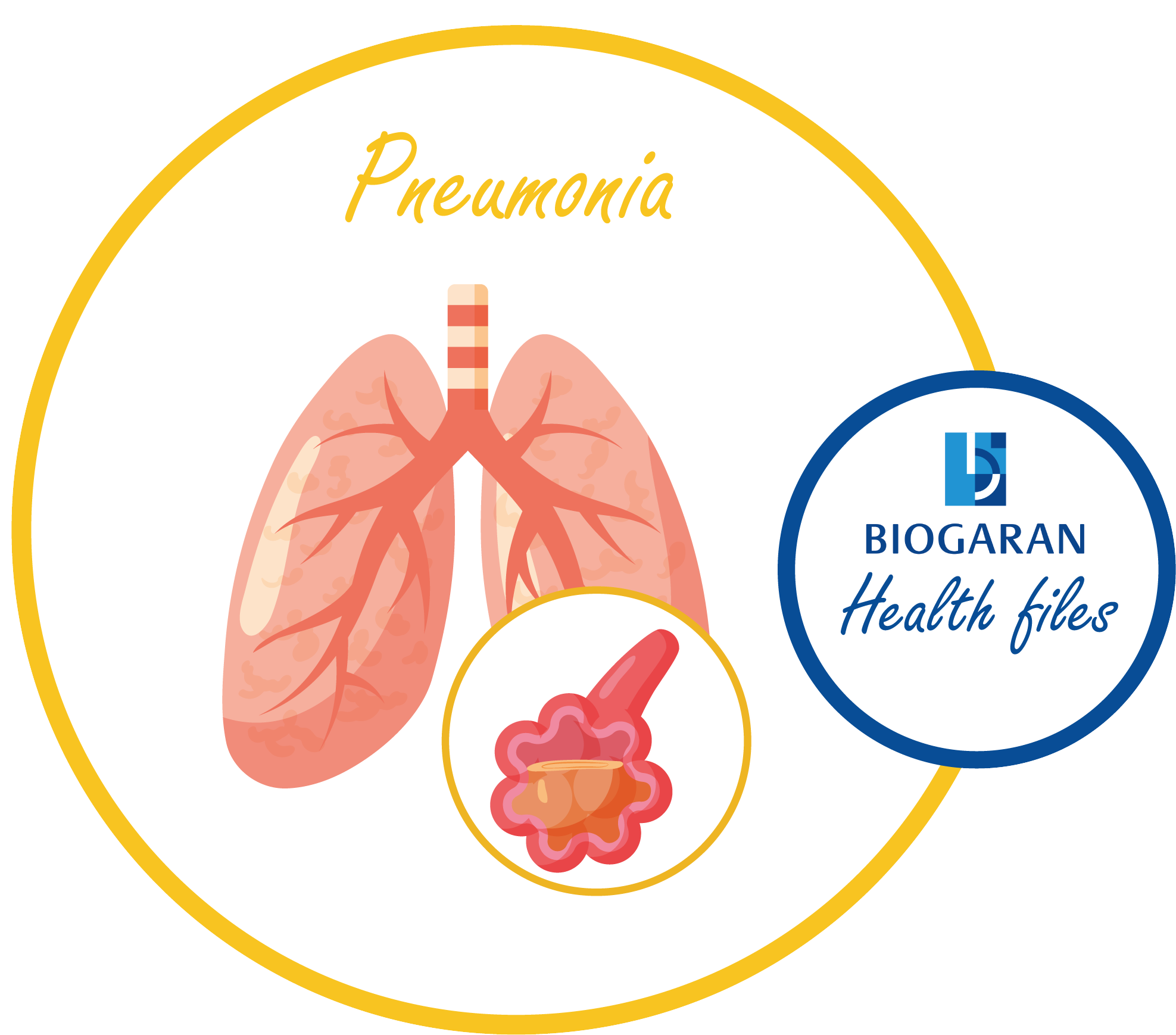Respiratory infections #2: Pneumonia
Explore this health file to better understand pneumonia: its causes, its symptoms but also the means of treatment.

Posted on
Respiratory infections are disorders that manifest in the upper airways such as the nose, throat, sinuses and larynx, or in the lower respiratory tract, including the trachea, bronchi and lungs. These can be caused by various pathogens such as viruses, bacteria, fungi and other microorganisms, which are spread through direct contact, air or via contaminated surfaces.
Predominant respiratory infections include: sinusitis, influenza, pulmonary abscess, bronchitis or pneumonia. [1]
This health report will focus on pneumonia.
I. Definition and key figures:
Pneumonia is an acute respiratory infection characterized by inflammation of the lungs, caused by a viral or bacterial infection. The most common cause is a bacteria called Streptococcus pneumoniae, also known as pneumococcus. [2]

The lungs are made up of alveoli, which fill with air during breathing in healthy individuals. In pneumonia, these alveoli fill with pus and inflammatory fluid making breathing painful and limiting oxygen uptake. [3][4]
Although pneumonia is often associated with the elderly, it is the deadliest infectious disease in children worldwide. At least one child dies every 39 seconds from pneumonia. [5]
Key figures:
- According to the World Health Organization (WHO), in the world, pneumonia is responsible for 14% of all deaths in children under 5. In 2019, it resulted in the death of more than 740,000 children. [4]
- In 2019, according to UNICEF, five countries accounted for more than half of all children’s pneumonia deaths worldwide: Nigeria (162,000), India (127,000), Pakistan (58,000), Democratic Republic of Congo (40,000) and Ethiopia (32,000). [5]
II. Causes
Pneumonia can be caused by various infectious agents, including bacteria, viruses, fungi and other pathogens.
In children, the most responsible pathogen for bacterial pneumonia is streptococcus pneumoniae. The second most common etiological agent is Haemophilus influenzae type b (Hib). Hib is known to cause severe infections in young subjects. [4]
There are also chronic lung diseases that can put an individual at risk of pneumonia. These include:
- Asthma
- Chronic obstructive pulmonary disease (COPD)
- Cystic fibrosis
- Viral infection of the lungs (e.g., influenza)
Other factors, such as age, can lead to the onset of pneumonia. Pneumonia can occur at any stage of life but is more common in elderly or frail people, whose immune systems are less developed (children) or weakened (elderly people). [2]
III. Symptoms
Pneumonia can be caused by several different pathogens. Symptoms will therefore vary according to the pathogen responsible for the pneumonia and the condition of the affected individual. Disease’s symptoms are as follows [6]:
- High fever (up to 102F- 105F) with shivers
- A dry cough that later becomes a productive cough with sputum
- Chest pain
- Shortness of breath
IV. Prevention
To prevent pneumonia and reduce the risk of infection, smokers need to reduce or stop smoking, because it is a major risk factor for pneumonia.
Vaccination can also help prevent pneumonia. Pneumococcal and influenza vaccinations are recommended, especially for frail and vulnerable people.
In addition to regular vaccination, maintaining a healthy lifestyle, a balanced diet and regular physical activity contribute significantly to pneumonia prevention. [7][8]
V. Treatment
Treatment of pneumonia is essentially based on oral antibiotics if the cause is bacterial. It usually lasts 1 to 2 weeks.
In viral pneumonia, treatment is based on analgesics and antipyretics to relieve symptoms of fever and pain, or antivirals if symptoms are particularly severe. [4][9]
Explore our health files by clicking here.
POI 0899-11/23
Sources
